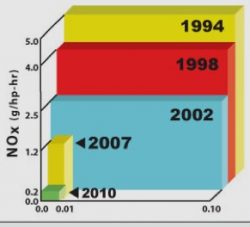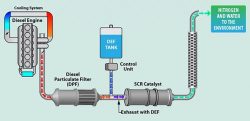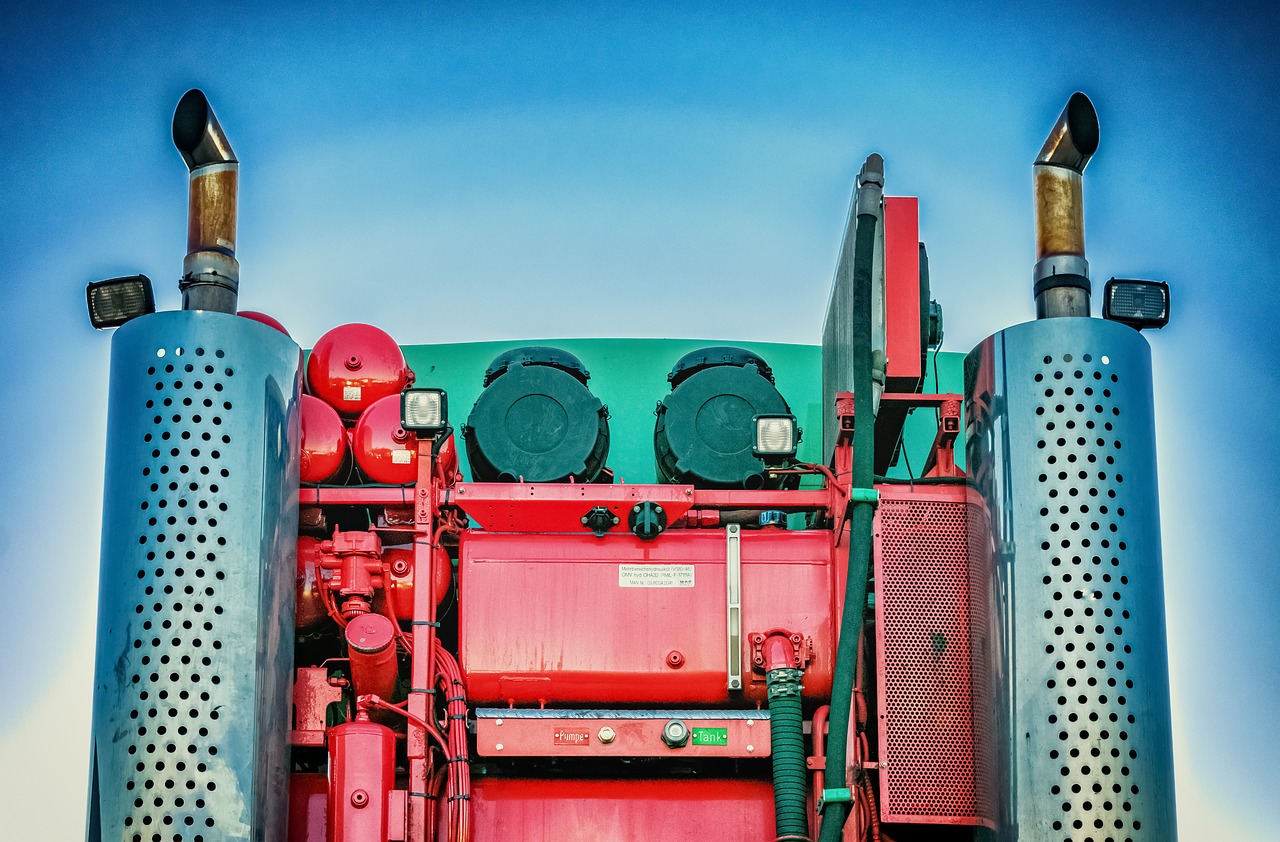DEF Defined & EPA Requirements

DEF, also known as Diesel Exhaust Fluid, is an aftertreatment fuel system liquid that is used in diesel engine vehicles to reduce air pollution. Specifically, DEF is designed to reduce the concentration and emission of nitrogen oxides (NOx), by converting nitrogen monoxide (NO) and nitrogen dioxide (NO2) molecules into:
- Harmless nitrogen molecules, which are the most abundant in our atmosphere
- Water
- Carbon dioxide, which is harmless to humans, but still plays a role in climate change
By transforming harmful emissions into harmless gases, DEF plays a key role in reducing emissions over the past few decades. The 2010 EPA Emission Requirements for diesel engines are:
- 0.2g/HP-hr of NOx
- 0.1g/HP-hr Particylate Matter
Looking at the chart to the right, DEF has helped reduce emissions by 98% since the late 1980s. This has led to a cleaner environment with less “black” fuel exhaust. These results have made DEF and essential fluid for all diesel engine vehicles.
Ingredients & DEF Standards (ISO 22241)
Sometimes to solve complex problems, all you need is a simple solution. DEF is a simple product consisting of only 2 ingredients: urea and deionized water. With such a short ingredient list, why would it be tough to manufacture DEF? In order for DEF to work effectively and protect your engine and fuel system, DEF must be made with extremely pure urea and water. These purity requirements are clearly defined in ISO 22241, Diesel Engines – NOx Reduction Agent, Aqueous Urea Solution (AUS 32). Additionally, DEF products that meet ISO 22241 may be licensed to display the API DEF Certification.
What requirements are needed to meet the ISO 22241 standard? Each ingredient has the following requirements:
- Technically Pure Urea with traces of biuret, ammonia, and water only. Urea that is free of aldehydes or other substances such as anticaking agents. The urea is to be free of contaminants such as sulfur, chloride, nitrate, or other compounds.
- Water with very low inorganic, organic, or colloidal contaminants. This is achieved by single distillation, deionization, ultra-filtration, or reverse osmosis.
Using these purified ingredients, DEF must have a urea concentration of 32.5%. This ensures that enough urea is present to convert the NOx and ensures reliable operation of the selective catalytic reduction (SCR) systems. It is also the concentration that produces the lowest freezing temperature of 12 F. If the fluid does not meet these ISO 22241 standards, it cannot be classified or called a diesel exhaust fluid.
How does it Work?
Now that we have found the fluids needed to convert the NOx, we need the technology and equipment to catalyze those chemical reactions. The most common systems used are Selective Catalytic Reduction systems (SCR). The SCR allows the following chemical reaction to occur: 
- Water evaporates and urea decomposes into ammonia and isocyanic acid
- Isocyanic acid reacts with the water vapor and hydrolyzes into carbon dioxide and more ammonia
- In the presence of oxygen and a catalyst, ammonia reduces NOx into nitrogen and water
SCRs have proven to be the most effective solution in reducing NOx emissions. SCRs are the only solution that curbs emissions without compromising fuel efficiency and engine performance. As an aftertreatment system, a system that does not work within the engine, SCRs allow engineers to tune engines that can help performance and efficiency. All diesel vehicles produced today have some sort of SCR built in.
SCRs also have safeguards in place to ensure a diesel engine is not operating without a proper amount of DEF. Many vehicles have warning systems to warn operators to refill their DEF tanks. If those fail, engines will shut down and will not engage until there is a sufficient amount of DEF in the tank to reduce any NOx produced by the engine. It is important for operators to monitor the DEF tank just like they would their fuel tank.
Benefits and Costs of DEF
With increased fuel efficiency, many fleets are noticing around a 5% fuel savings compared to older models. Off-road vehicles and equipment that use SCRs and DEF can see fuel savings well beyond 5%. With large fleets, that 5% can add up significantly over many vehicles and miles.
The DEF needed to properly reduce NOx is generally 2-6% of a vehicles fuel consumption (e.g. 2-6 gallons of DEF needed for every 100 gallons of diesel fuel consumed). To figure out your DEF needs, simply determine: miles driven by your vehicle, miles per gallon (MPG), and DEF dosing rate (2-6%). By dividing miles driven by the MPG, you find your fuel consumption. Multiply your fuel consumption by the dosing rate to get your required DEF volume.
The cost of the DEF is the only extra cost to SCR systems, but those costs can easily be offset (and then some) with the 5% fuel savings. The weight of a full DEF tank is only 5-9 lbs., which is negligible in large commercial vehicles. In passenger cars with diesel engines, typically you need to fill your DEF tank at each oil change. Fortunately, a 2.5-gallon container of DEF can be found for under $20 at most retailers.
Storing and Handling DEF
DEF has a freezing/crystallization point of 12 F. As DEF freezes into a crystalline slush, its volume can expand as much as 7%. Many vehicles have heating elements that ensure in-tank DEF does not freeze or threaten vehicle failure. Freezing does not affect the efficacy of the product, but it is important to store it in tanks at appropriate temperatures.
The shelf life of DEF is about 1-2 years, but could be reduced if the fluid is exposed to direct sunlight or stored at temperatures above 86 F. The water can evaporate in tanks, so it is important to keep the tanks sealed and at an ambient temperature around 75 F. If the fluid evaporates, do not add your own mixture as that can upset the precise chemical balance of manufactured DEF.
Where to get DEF
For commercial fleets and clients, speak with a distributor about solutions and certified products. Twin Specialties offers DEF in drums, totes, and bulk. Additionally, we can work with certain businesses interested in buying larger amounts of retail/consumer-packaged DEF products. Individuals who drive a diesel-engine vehicle can purchase bottles or DEF at gas stations, hardware stores, or auto shops. As diesel-engine vehicles become more popular, especially in Europe, many gas stations are adding AdBlue pumps where drivers can pump DEF directly in their car from the pump for cost savings.

